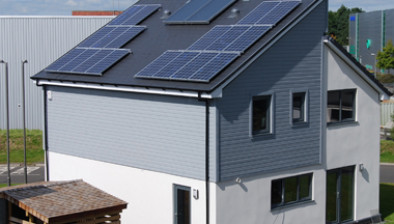New rent control proposals ‘unnecessary and costly’, warns letting agency

David Alexander
A consultation to transition the ending of the Cost of Living (Tenant Protection) (Scotland) Act 2022 is too complex, unwieldy, costly to implement and would not be beneficial to tenants or landlords, according to a lettings and estate agency.
The proposal – which has a deadline of 15th January 2024 – seeks to introduce controls on the level of rent increases that can be levied when the terms of the Cost of Living Act terminate at the end of March this year.
It proposes that rents be set by the lowest of three comparators: open market rent; a landlord’s proposed new rent; and a ‘reasonable’ increase devised from a new taper system using comparison with a percentage of market rent.
The tapering would mean that if the difference between the tenant’s current rent and the market rent was less than 6% then the proposed increase would be allowed as long as this was not higher than the market rent.
Where the market rent is 20% above the proposed rent then an increase of 10% would be agreed and where it is 30% above then the increase would be fixed at a maximum of 15%.
David Alexander, the chief executive officer of DJ Alexander Scotland, said: “I appreciate that the current consultation is aimed at avoiding a cliff edge situation when the current legislation ends at the end of March. The problem is that intervening in the market over the last eighteen months has not produced any benefits for tenants but has actually been detrimental to their interests.
“The latest Scottish Government data shows that between 2010 and 2022 rents in two-bedroom properties rose above inflation in only four areas out of 18 with Glasgow and Edinburgh being the two biggest risers and the Scottish average below inflation. One year on and six areas of Scotland have increases above inflation and the average for the country as a whole is now higher than the consumer price index.
“In the last year alone, average rents have increased in all sized properties ranging from 11.7% for one-bedroom to 14.3% for two-bedrooms. Every type of property (from one to four bedroom to a room in a property) has had a double digit increase in rents since the Cost of Living legislation was introduced in October 2022 exceeding the annual average increases in rents over the previous 12 years by a factor of at least three.”
David added: “By intervening in the market tenants have paid more in rents than they would have had no such intervention taken place. The current proposal of giving a 6% increase is more than the historic annual increases have been and this idea would be extremely difficult to monitor and implement. Deciding the market value of the rent of every property would be almost impossible to do. Different streets adjacent to one another will have different market values, while Edinburgh and Glasgow are completely separate markets to the rest of Scotland.
“Rural and urban areas are not the same. Volumes are not the same, seasonality can play a part in rent levels rurally in a way they wouldn’t in a city or town location. The number of variables involved means that this would require an enormous team of people to work on it and even then, it would be doubtful if it worked. We already have a system involving the first-tier housing tribunal which rules on whether a rent increase is fair. This proposal will add further layers of bureaucracy with no gain for landlords or tenants.
“Unfortunately this consultation paper seems like a further attempt to impose controls on the market which are unnecessary. This policy would be costly to implement, unwieldy to manage, and not beneficial to either landlords or tenants. A far simpler solution would be to let the market return to normal, not impose external controls on rent levels, and the result will be lower rent increases than we have seen in the last eighteen months when rents rose at a much higher annual level than in the previous 13 years. The only long-term solution to rising rent prices is to encourage investment and growth in the private rented sector (PRS) while simultaneously funding a substantial growth in the supply of social housing. The greater the investment in the PRS the more stability will be created in the housing market.”









